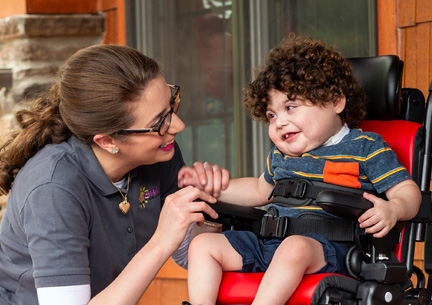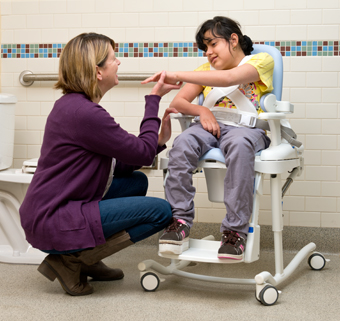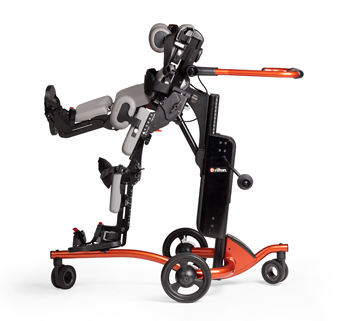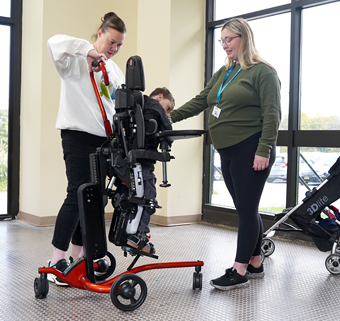Evidence Update: Standing Programs for Hip Flexibility
| July 2015 Secondary to the motor disorders which affect their physical development, children with spastic cerebral palsy tend to lose lower limb range of motion between infancy and adolescence. Researchers have measured hip abduction decreases of nine degrees in this population. Since loss of hip abduction makes balance and walking difficult, maintaining hip abduction becomes a crucial intervention.
Secondary to the motor disorders which affect their physical development, children with spastic cerebral palsy tend to lose lower limb range of motion between infancy and adolescence. Researchers have measured hip abduction decreases of nine degrees in this population. Since loss of hip abduction makes balance and walking difficult, maintaining hip abduction becomes a crucial intervention.
Because of the ability to provide sustained stretch to contracted muscles, standing programs are used to maintain or increase ROM in the hip, knees and ankles in children who are compromised. But for maintaining hip abduction range of motion, many standers on the market lack sufficient abduction width.
In a study recently published in Pediatric Physical Therapy, 13 children with spastic diplegic cerebral palsy participated in therapeutic standing programs using customized standers that provided approximately 30 degrees of abduction for each leg. These children stood in the standers between 70 and 90 minutes daily five times per week. Initial hip abduction measurements were taken at one year old and then final measurements at five years old.
After four years with their standing routines, these children maintained their hip abduction ROM without the losses typical in this population, and additionally improved their walking abilities.
Although this study has limitations (small sample size being one of them), it nevertheless provides a new and welcome insight into an effective management program for children susceptible to hip adduction contractures.
Reference:
Macias-Merlo L, Bagur-Calafat C, Girabent-Farres M, Stuberg W. Standing programs to promote hip flexibility in children with spastic diplegic cerebral palsy. Pediatr Phys Ther. 2015;27:243-49.
http://www.ncbi.nlm.nih.gov/pubmed/26020594



